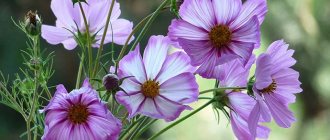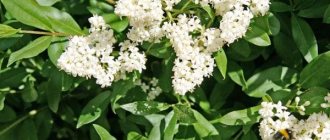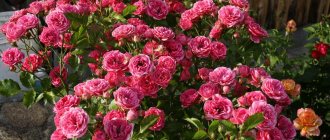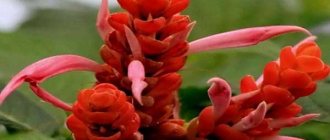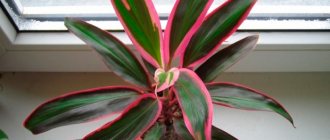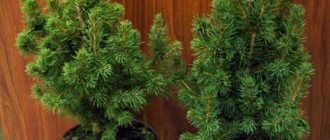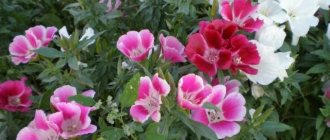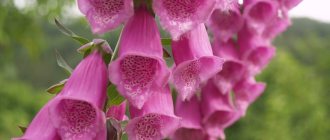Peculiarities
The main property is the presence of white milky juice. The ancient Roman physician and botanist Euphorbus, the court physician of the Numidian king, studied the plant for many years and developed recipes for treatment. Euphorbia owes its second name to him.
Euphorbia has many beneficial properties:
- used in garden design;
- Serves as a home interior decoration;
- used in cosmetology - cell juice whitens freckles, removes excess pigmentation;
- used in folk medicine - a natural aphrodisiac, has many medicinal properties.
The benefits and harms of milkweed
Euphorbia is not only a beautiful ornamental plant, striking in its diversity of species, but also a useful product. Euphorbia juice has long been used in medicine to treat diseases such as:
- tumors;
- peptic ulcers;
- gastritis.
For cosmetic purposes, milkweed juice has proven itself to be an excellent remedy in the fight against burns, boils, skin ulcers, age spots, warts and calluses.
Some varieties are used in the manufacture of rubber.
Despite all its beneficial properties, pure milkweed juice that has not undergone special processing is a toxic substance, dangerous to animals and people. Contact of juice with skin can cause burns. It is not recommended to make medicinal products from milkweed at home on your own. If it enters the human body, milkweed juice can cause poisoning or even coma. In medicine, the substance of this plant undergoes serious processing, which removes all toxic substances.
Advice: If milkweed juice does get on your skin while working with the plant, you need to thoroughly rinse the area with water and take an anti-allergy pill. Be sure to use gloves and other protective equipment when handling this plant.
Types of indoor milkweed
All types of milkweed are poisonous. Once in the body, the juice provokes burns of the skin, mucous membranes, and poisoning. Annual and perennial plants are not alike. They differ in the shape of leaves, stems, and inflorescences.
| Name | Description |
| Akalitha (foxtail) | Evergreen low shrub. The leaves are ellipsoidal in shape. Bright red flowers are collected in spike-type inflorescences. |
| Edged Annual | Reaches a height of 75 cm. It has a light edge on enlarged emerald-colored leaves. |
| Belozhilkovy | A popular indoor plant with a powerful ribbed trunk. Malachite leaves have white veins (this is how it got its name). Decorated with small, inconspicuous flowers. |
| Multicolor | Plant for the garden. Perennial. Grows up to 80 cm. The hemispherical bush blooms at the beginning of the last spring month. |
| Trihedral | Perennial. At home, with proper care, it grows up to 3 m. The wide, fleshy triangular trunk is covered with thorns. The ends of the stems are strewn with bright green leaves. Over time they fall off. Rarely blooms. Propagates by self-sowing. |
| Comb | An evergreen shrub-type plant. The ovoid leaves are collected at the top of the ribbed trunk. Forms white and pink flowers. |
| Brilliant (mile) | Perennial thorny shrub. Aggressive needles increase as they develop. The plant is decorated with small flowers of white, pink, yellow, and cream colors. It is called the “crown of thorns”. Flowering begins in early spring and continues until late autumn frosts. |
| Poinsettia | An evergreen plant up to a meter tall. The leaves are large, ellipsoid in shape with smooth, wavy, jagged edges. At the tops of the shoots, brightly colored bracts are formed, adding a decorative appearance. |
Milkweed propagation

The photo shows milkweed shoots
Milkweed propagation at home is carried out in the following ways:
- cuttings;
- seeds;
- dividing bushes.
Cuttings
This method is carried out by cutting off the top of the shoot or breaking off a leaf of the plant. For each case there is its own algorithm of actions, namely:
- Stem cuttings: sections from the upper part of the shoot with leaves are immersed in warm water. Then sprinkle charcoal or ground pepper on the cut area. When a protective film appears on the cut, the cutting is planted in a mixture of peat and sand, treating the root site with a growth stimulant. Then it is watered and covered with film on top. The plant must be placed in a well-lit place and the temperature maintained at about 20 degrees Celsius. In about two weeks, the milkweed will take root.
- Leaf cuttings: a leaf is plucked from a plant, placed in warm water, sprinkled with a growth stimulant and placed in mineral wool cubes. Then the plant is planted in soil made of coarse sand. Next, the flower is watered and covered with film. After a month, the spurge will take root.
Important: It is necessary to periodically remove the film from the flower to ventilate it. This way you will avoid the formation of fungal diseases in the flower.
Seeds
The seeds are placed in specially prepared soil, which you can make yourself or buy in a store. It is better to place the container with soil and seeds in a well-lit place and keep it moist. The temperature should be about 24-25 degrees Celsius. In two to three months the flower will sprout. As soon as two or three leaves appear, the plant should be transplanted into a pot.
Dividing bushes
The milkweed is taken out of the pot and the roots are carefully inspected, cutting off any rotten or damaged areas.
Then use your hands to carefully separate the bushes into pieces. It is advisable to do without a knife in this case. After this, the spurge is planted in the prepared soil. If you couldn’t do without a knife, then you need to sprinkle the cut area with charcoal. Important: This method of propagation is extremely stressful for the plant. For this reason, it will not grow or bloom profusely for the first two years. Gradually, the milkweed will return to normal and will delight you with its appearance.
Euphorbia - nuances of growing
The poisonous plant occupies a special niche in indoor floriculture. The technology for growing milkweed has certain nuances:
- Use rubber gloves when working with the plant.
- Correct placement - do not place the flower near food products. It is better to keep it away from rooms where small children and pets play.
If these rules are followed, spurge will not cause harm. Basic requirements for keeping a plant indoors:
- good lighting;
- coolness in the winter months;
- moderate watering.
Following all recommendations will ensure successful growth of milkweed and attractive appearance. Growing an ornamental plant is accessible to beginning gardeners.
Plant Care Guide
Euphorbia is considered an undemanding plant, so even novice gardeners can care for and grow it. Many garden species of this plant tolerate winter well, remaining in the soil until spring. For the successful life of a flower, it is important to comply with two basic conditions:
- Protect spurge from drafts. Despite all the unpretentiousness of the flower, it does not tolerate drafts and can die if not maintained properly. Try to choose a secluded place on your windowsill if you are growing a flower at home.
- Ensure moderate watering of the plant. Excessive water can destroy the root system of a flower, so it is necessary to water it according to the season.
If you adhere to these nuances, then spurge will always delight you with its bright green color and flowering, if the selected species is capable of it.

Under favorable conditions, spurge blooms. And how!
Important: Whenever working with a flower, take precautions. Pricks from milkweed needles and thorns can be poisonous, and the sap causes burns. When interacting with the flower, wear gloves that will protect your skin.
Required lighting
Euphorbia is classified as a light-loving plant, so when growing it at home, it is worth determining the location of the flower on the south or southeast side. The flower tolerates even direct sunlight, but during the day it is still worth protecting the plant from excessive sun. Some species, such as “Mil”, “Palassa”, “white-leafed”, can get burned if the window is not shaded in the summer.
In winter, euphorbia needs additional lighting in the form of special ultraviolet light lamps.
Euphorbia will not die due to lack of sunlight, but if grown in the shade, its leaves will lose their rich green color and become dull.
Temperature
Euphorbia originally grew in hot countries, so the plant can safely be called heat-loving. Some types of milkweed can withstand severe cold temperatures down to +6 degrees. The temperature regime largely depends on the periods of rest and activity of the flower. For clarity, we present information about the temperature of milkweed in this table:
| Season | Temperature |
| Autumn winter | +10-15°С |
| Spring Summer | +20-25 °С |
The preferred temperature regime depends on the variety of milkweed, but minor temperature changes during the day do not adversely affect this flower.
Advice: If possible, in the summer you should take the flower out onto the loggia or into the garden. Fresh air, warmth and plenty of bright light will benefit milkweed.
Watering
For irrigation, the water should be settled in advance. The water should not be cold; it is preferable to water the spurge with warm water or at least at room temperature.
Moderate watering is very important for the plant, since excess water content in the soil will damage the root system of the flower. In summer, milkweed is watered once a week, and if the plant looks like a cactus, then once every two to three weeks. During particularly hot periods, spurge is sprayed if you planted the leafy variety. Before each subsequent watering, the soil should be dry. Excess water in the pan must be drained immediately. In winter, that is, during the dormant period of the flower, watering is reduced even more or stopped altogether.
Tip: If you forgot to stand the water in advance, you can simply boil it in a kettle and cool it. After this, water the flower. Another way out of this situation is to use a filter to purify water.
Humidity
Euphorbia tolerates dry climates well. The preferred air humidity for this plant is 40-50%. If your milkweed variety is similar to a cactus, then air humidity is not particularly important for it, but dry air remains the best option. This plant does not like abundant moisture, so it is recommended to remove dust from its leaves with a dry brush.
The soil
Soil for milkweed can be purchased ready-made in the store. Opt for soil for succulent plants. If you couldn’t find one, then soil for cacti is quite suitable. If you are not lucky enough to purchase a ready-made mixture for planting your plant, then you should prepare the future soil yourself. There are two main compositions of soil for milkweed:
- Mix leaf soil and sand in equal proportions. A third of the total mass should be humus. Move well. Leaf soil is loose soil that is formed as a result of humus of fallen leaves. Manure is often used as humus. You can buy it ready-made in the store.
- Another way to prepare soil for milkweed is to mix equal proportions of turf and sand.
Most often, a flower has to be replanted after purchase, so you need to find out about the soil and the rules for this process in advance.
Important: Do not forget about high-quality drainage for the flower. Place small pebbles or expanded clay at the bottom of the pot.
Transfer
It is advisable to replant the plant in the spring. This way the milkweed quickly adapts to new conditions and recovers as quickly as possible. What to do if you purchased milkweed at another time of year?
There are several situations when transplantation cannot be delayed until spring. Let's consider the following cases:
- Initially, you bought milkweed in a container not intended for subsequent cultivation. For example, this could be a shipping container.
- The soil that is in the pot after purchase contains growth stimulants, which means that it is not suitable for subsequent maintenance of the flower.
Euphorbia should be replanted very carefully, transferring it from one pot to another. The root system of these plants is very delicate, so rough handling can easily damage it. Let's consider a few basic rules for planting and replanting milkweed:
- It is better to carry out the procedure in the spring, during the growing season of the plant.
- The soil must be prepared in advance. If you are not sure about the quality of the soil, then water it with potassium permanganate before planting. This way you will carry out a small disinfection of the soil.
- Replanting must be done once every two years. Pay attention to the roots. If there is not enough room for the roots in the pot, then the plant needs to be replanted.
- After transplanting, the spurge should be watered with settled warm water.
Important: Do not forget about the drainage layer at the bottom of the pot. In its absence, the plant will rot.
Video on the topic:
Choosing a pot
For milkweed you need a deep pot, preferably with thick walls. When replanting, you should choose a pot two to three centimeters larger than the previous one.
Tip: Do not plant a plant in a pot “to grow,” that is, larger than necessary. This can cause rotting of the root system.
Top dressing
During the growing season, namely in spring and summer, milkweed needs feeding. You can buy this nutrient mixture at a succulent store or prepare it yourself. The recipe for homemade feeding for milkweed looks like this:
Mix leaf and garden soil, sand and brick chips in equal proportions. You can add a little birch charcoal.
In spring and summer, spurge is fed once every 2 weeks. In winter, fertilizing is not carried out, since the plant is dormant.
Tip: Do not use nitrogenous fertilizers for fertilizing. They can cause cracks in the stems of milkweed.
Plant pruning
Caring for milkweed also requires annual pruning. This procedure does not apply to all types of milkweed. The most commonly pruned euphorbias are “Mila” and “brilliant”. Pruning is done in mid-summer. Remove any dead stems and trim the tops to form a crown.
Tip: If you want your milkweed to look more well-groomed and bloom profusely, you should remove the shoots in late February or early March. Euphorbia will not bloom in summer, but next year it will become denser and bloom stronger than before.
Home care
Euphorbia is quite unpretentious for indoor cultivation. Growing an ornamental plant is accessible to beginners.
Illumination
Euphorbia is not demanding of light. It does not wither in the shade, but its growth slows down. With sufficient lighting, the flower feels much better.

In the summer season, most milkweeds get along well in light shade. In winter, the plant needs as much light as possible. A small amount of direct sunlight is acceptable.
Lack of light leads to disruption of nutrient metabolism, slower growth, and death.
Temperature
The plant loves warmth. For milkweed, room temperature is considered optimal. Some plant species tolerate temperatures down to +5°C, but mostly heat-loving varieties are grown at home. If possible, in the warm season, the flower is taken out into the fresh air, onto a balcony or loggia. When the temperature there drops below +10°C, the succulent is returned to the room.
Watering
Excessive waterlogging of the soil leads to death. Rules for watering milkweed:
- Spring-summer period - held once a week.
- Heat - additional weekly spraying of leaves with water at room temperature.
- Winter time - once a month. When the temperature in the room with milkweed drops to +12°C, moistening is completely stopped: wet soil will cause the death of the plant.
- The period of winter leaf fall means careful watering.
If the soil is very dry, watering is resumed gradually. Add a little water at room temperature to the plant pot. In 2-3 days the portion is doubled. After high-quality impregnation of the soil, regular watering is carried out.
Humidity
The plant tolerates dry air well. Moderate humidity is considered preferable for milkweed. In winter, euphorbia is placed away from heating. In hot weather, the leaves are sprayed with warm water.

Excessive humidity at low temperatures causes leaves to fall. This also causes root rot, which causes the plant to die. Moderate humidity is a significant factor for growth.
Earth mixture
High-quality development requires a certain substrate. Permeable, loose soil is suitable for milkweed. In specialized stores they purchase ready-made soil for succulents and cacti. To prepare the soil mixture yourself, use:
- leaf soil - 2 parts;
- humus - 3 parts;
- sand - the same amount.
Drainage is placed at the bottom of the flower pot - expanded clay, brick fragments, charcoal, foam balls, pebbles.
Fertilizer
Euphorbia is fed during the growing season. It falls during the spring-summer season. Fertilizing is applied once a month, after watering abundantly.
To improve the growth of milkweed, fertilizers containing potassium are suitable. Organic matter is not added to the crop. In the autumn-winter period, euphorbia is at rest: fertilizers are not used.
Features of transplantation
The first stage is the preparation of loose, nutritious soil. Transplantation is carried out in the spring. A new flower pot is selected with a diameter wider than the previous one. Optimal transplant timing:
- for young specimens - once every 12 months;
- for established flowers - once every two years.
Trimming
Carry out after the end of flowering, always wearing gloves:
- cut off dried stems;
- shorten the elongated trunk.
The purpose of pruning is to form a thick, lush crown. The next season the plant blooms profusely. Many young shoots are becoming active. The flower takes on a more decorative appearance.
Reproduction methods
Growing milkweed is not difficult. Reproduction is carried out in three ways:
- sowing seeds;
- cuttings;
- division.
The most accessible method is propagation by seeds that ripen in boxes. Then they are poured into the pot. The collected seeds are placed in moist soil and covered with polyethylene. During germination, constantly moisten the soil. Young shoots do not need additional care.
Propagation by cuttings is carried out in the fall. A 10 cm leaf sinus shoot is used.
Shoots for cuttings are cut at an acute angle. Immerse in hot water for 10 minutes. After the juice flow stops, the sections are sprinkled with crushed coal. Leave for 48 hours to dry. The cuttings are planted in moist, prepared soil. Cover with polyethylene, which is removed after rooting.
A large bush is propagated by division. In the resting position, the flower is taken out of the pot and the rhizome is divided into parts. The resulting components are planted in separate containers. The method is not recommended for use due to its high complexity.
Pests and diseases
Improper care of the plant causes critical conditions. A common disease of milkweed is rot. The main reason is the effect of drafts on the plant.
Euphorbia is susceptible to gray mold. Appears in the form of white spots on the above-ground parts of the plant. The leaves are covered with a gray coating. The main cause of the disease is excess humidity. To prevent gray rot, you should regularly remove organic residues, ventilate the room, and avoid unnecessary damage to the plant.
When there is a lack of moisture, the leaves of the succulent turn yellow and fall off. The poisonous plant is susceptible to attack by pests. The threat is posed by spider mites, aphids, root and mealybugs. Scale insects are the main pest that causes yellowing of leaves.
In pest control, folk remedies are used - soap solution, tobacco dust, ash, medicinal herbs, fragrant flowers (lavender, nasturtium, calendula, gypsophila). Advanced forms of diseases require the use of chemicals. In specialized stores you can buy:
- Fufanon, actellik – kills ticks;
- Akarin, Intavir - destroys aphids;
- Arrivo has a detrimental effect on mealybugs.
Rules of care
Oddly enough, with such an abundance of species, home spurge has similar growing characteristics for all. The website flowery-blog.ru has collected the most important recommendations.
Temperature and lighting
All types of euphorbia prefer bright light; in the shade they develop poorly, grow slowly, and the variegated forms lose color. Artificial lighting for flowers. Some flower varieties, especially cactus-like ones, easily tolerate direct sunlight. It is better to keep leafy forms in some shade during hot midday hours.
Euphorbia at home is quite hardy, including to temperature changes. The most comfortable temperature for him will be 20-25 degrees, the lower limit can be within 10 degrees above zero. However, it is undesirable to leave the flower in a cold place for a long time; nevertheless, it is heat-loving! In summer he will feel great on the balcony.
Watering and humidity
Since euphorbia is a succulent plant, watering it is often not recommended. The optimal watering regime is after drying the top layer of soil. In this case, underfilling is better than overfilling! After all, excess water will make the plant weak and eventually cause rotting. What you need to know about watering flowers.
Indoor spurge is unpretentious to air humidity! Therefore, at home, this succulent does not need spraying. However, this procedure will not make things worse! Sometimes it’s worth pampering your pet by wiping its leaves from accumulated dust (if you are the owner of a deciduous species).
✿
Why is a poisonous flower dangerous?
All varieties of the plant secrete a milky sap. It is dangerous for children, people with allergies, and pets. Possible harm:
- Skin burn - redness, swelling, allergic reactions appear. The affected area is washed with cold water, and antihistamines are taken - Loratadine, Ebastine, Zodak Express, Cetirizine.
- Contact with eyes may result in loss of vision. A doctor's consultation is required.
- Ingestion through the mouth causes dizziness, nausea, vomiting, low temperature, and convulsions. Fainting is possible. The stomach is thoroughly washed, absorbents and activated carbon are taken. Drink plenty of liquid. In case of severe poisoning, call a doctor.
Careful handling of the flower during care allows you to avoid possible dangers.
Mr. Summer Resident Explains: Is It Possible to Keep Euphorbia at Home?
Euphorbia is endowed with life-giving power. It promotes family well-being and serves as a source of positive emotions. During flowering, the ability to bring good luck and happiness to the house is added to the positive properties. Euphorbia is considered a love spell herb that can get rid of the evil eye and damage.
According to existing signs, needle-shaped plants cannot be kept at home. Feng Shui experts believe that this flower is suitable for living spaces other than the bedroom. The best place for euphorbia is the corridor. During the formation period, the plant is moved to the living room.


